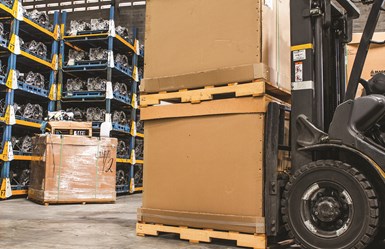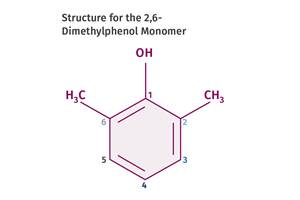The Fantasy and Reality of Raw Material Shelf Life: Part 1
Is a two-year-old hygroscopic resin kept in its original packaging still useful? Let’s try to answer that question and clear up some misconceptions.

What happens to a hygroscopic material like nylon if it is stored in its original packaging for an extended period?
A few weeks ago, a longtime colleague emailed me with a question about the shelf life of two nylon materials. One was a 30% carbon fiber-reinforced nylon 66, while the other was a 20% glass fiber-reinforced nylon 12. My colleague’s company had inherited these materials along with the associated molds and their customer had no need for additional molded parts until two years after the jobs had been transferred.
The customer was now expressing concern that the raw materials, which were still in their original packaging and had been stored in an indoor warehouse during this time, had expired and that their properties would have been compromised. An appeal to the material supplier brought only a statement saying they would stand behind the material if it was less than a year old.
This raises a common conversation in the industry regarding the longevity of raw materials if they are kept in storage for an extended period of time, and there are multiple factors that need to be considered. First, is the material in its original packaging and has that packaging been breached in any way? Has it been been punctured with a forklift, or have stacked gaylords collapsed into one another? This will introduce at least the possibility of contamination. In this case, the potential problems are more significant because these are nylons, which are very hygroscopic materials that can absorb significant amounts of moisture from the atmosphere over time.
There is a myth in our industry that nylon exposed to the air becomes “saturated” and will never dry. But saturation comes from immersion in water and results in moisture content levels of 8.5-9% in nylon 6 and 66. Studies have shown that nylon 66 exposed to typical ambient conditions absorbs approximately 2.2-2.5% moisture by weight of polymer and with some patience and time that moisture is removable. Nevertheless, it is true that once out of the original package, nylon can become more challenging to process.
There is a myth in our industry that nylon exposed to the air becomes “saturated” and will never dry.
But moisture absorption and removal is a reversible process. Ostensibly, shelf-life concerns would pertain to nonreversible mechanisms. Among these would be loss of volatile constituents such as plasticizers. The principal concern, however, is oxidation. All polymers are susceptible to oxidation to some degree. This will depend upon the chemistry of the polymer and the level of stabilization provided against the mechanism. We understand that the rate of oxidation increases with rising temperature, and a useful rule of thumb that governs this relationship between time and temperature states that with every increase of 10oC the reaction rate doubles, thus reducing the expected life of the material by 50%.
This is an exponential relationship, so a rise of 20oC will increase the reaction rate by a factor of 4 (22), a 30oC increase quickens the process by a factor of 8 (23) and so on. We know from studies that the base acceleration rate per 10oC increase is not always exactly 2. It has been observed to be as low as 1.8 and as high as 2.5, but using the generic value of 2 enables a reasonable estimate of how a material will survive exposure to elevated temperatures.
Establishing Material Shelf Life
Is there a way to establish an expected shelf life for a material based on published data? In the case of these two materials sitting in my colleague’s warehouse, the answer was yes. The data sheets for both materials published something referred to as a continuous use temperature. This can be a rather loosely defined metric, but it does provide a point of reference for creating an expectation of longevity.
For the nylon 66, the continuous use temperature, as determined by ISO 2578, was given as 100-120oC (212-248oF). For the nylon 12, the published range was 90-120oC (194-248oF). The question then becomes, what time period is referred to by the term “continuous?” Often this refers to a period of 5,000 hours. But, in discussing this property with the material supplier, they offered that continuous in this case referred to 20,000 hours.
To give everyone the benefit of the doubt, we can select the low end of the published range — 100oC for the nylon 66 and 90oC for the nylon 12. Additional caution can be employed by assuming the warehouse temperature (in Nebraska) averaged 30oC (86oF) year-round. This assumption also makes the math simpler. Now, consider that for the nylon 12, a difference of 60oC (140oF) between 90oC and 30oC would slow down the rate of oxidation by a factor of 26 (64).
But moisture absorption and removal is a reversible process.
Multiplying this factor by the reference time of 20,000 hours would give an expected lifetime for the material at room temperature of 1,280,000 hours (a little over 146 years). Even if we dial back the acceleration factor to a level lower than anything we have ever observed, 1.5 for example (to account for what are called cage effects), we still end up with a projected room-temperature lifetime of 26 years. Because the lowest projected continuous use temperature for the nylon 66 is 10oC higher, all these projections would increase by 1.5 to two times, to yield a result of approximately 40-50 years.
So here is the question for material suppliers: If their own published data suggests that parts molded from these materials could last for a quarter to half a century at room temperature, what is it that makes the pellets from which we will produce these parts so fragile that their integrity would be called into question after 12 months? There is an obvious problem in logic here. A cynical person might conclude that this discussion about shelf life, at least in this case, is a disingenuous playing of a “get out of jail free” card.
Of course, these questions can be readily answered by performing tests on the “old” material and a newly minted lot. Molecular weight determinations can be a good place to begin, and as a follow-up, specimens can be molded from the two lots and the mechanical properties can be compared. But, based on the logic we have gone through above, it would be expected that the material that has been sitting on the warehouse shelf for two years will be perfectly serviceable.
While the issue of shelf life appears to have no merit in this particular case, there are instances where it can be a concern. This is a combination of the material in question and some questionable practices in storing the materials. We will address these in our next segment.
ABOUT THE AUTHOR: Michael Sepe is an independent materials and processing consultant based in Sedona, Arizona, with clients throughout North America, Europe and Asia. He has more than 45 years of experience in the plastics industry and assists clients with material selection, designing for manufacturability, process optimization, troubleshooting and failure analysis. Contact: 928-203-0408 • mike@thematerialanalyst.com
Related Content
Scaling Up Sustainable Solutions for Fiber Reinforced Composite Materials
Oak Ridge National Laboratory's Sustainable Manufacturing Technologies Group helps industrial partners tackle the sustainability challenges presented by fiber-reinforced composite materials.
Read MoreHow Do You Like Your Acetal: Homopolymer or Copolymer?
Acetal materials have been a commercial option for more than 50 years.
Read MoreTracing the History of Polymeric Materials: Polyphenylene Oxide
Behind the scenes of the discovery of PPO.
Read MoreMelt Flow Rate Testing–Part 1
Though often criticized, MFR is a very good gauge of the relative average molecular weight of the polymer. Since molecular weight (MW) is the driving force behind performance in polymers, it turns out to be a very useful number.
Read MoreRead Next
Understanding Melting in Single-Screw Extruders
You can better visualize the melting process by “flipping” the observation point so that the barrel appears to be turning clockwise around a stationary screw.
Read MorePeople 4.0 – How to Get Buy-In from Your Staff for Industry 4.0 Systems
Implementing a production monitoring system as the foundation of a ‘smart factory’ is about integrating people with new technology as much as it is about integrating machines and computers. Here are tips from a company that has gone through the process.
Read MoreLead the Conversation, Change the Conversation
Coverage of single-use plastics can be both misleading and demoralizing. Here are 10 tips for changing the perception of the plastics industry at your company and in your community.
Read More
.jpg;width=70;height=70;mode=crop)





























